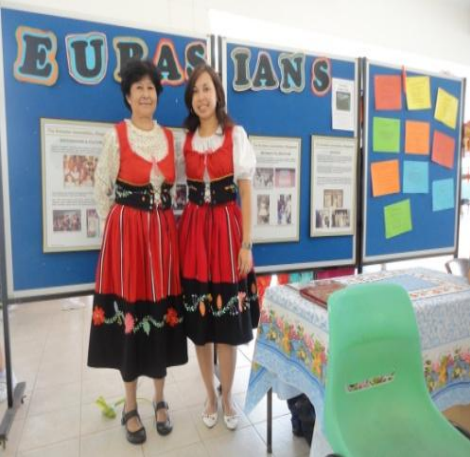
Attire & Music
Eurasian Attire
With their mixed heritage, Eurasians are free to wear any clothes for comfort. They are in formal clothes for a day at work, colourful Portuguese costumes for a party or a comfortable sarong on a sunny day. During the early 16th century, the Portuguese men married local Asian women, who were mostly Malay. With this maternal influence, Eurasian women wore the ‘Baju Panjang’, which looked similar to the ‘sarong kebaya’. For performances, dancers continue to wear the Traditional Portuguese dance costumes.
Dance & Music
Eurasians enjoy live bands comprising family and friends. The music offered often makes one dance all types of styles, including ballroom, waltz and folk.
A classic song is the ‘Jinkli Nona’, a traditional Portuguese Malaccan folk song. The term is in Kristang and is translated as ‘fair maiden’. It is a unique dance enjoyed by many Eurasians. It is a song about a man wanting to marry a woman and is often danced during weddings where people tend to meet other new people.


